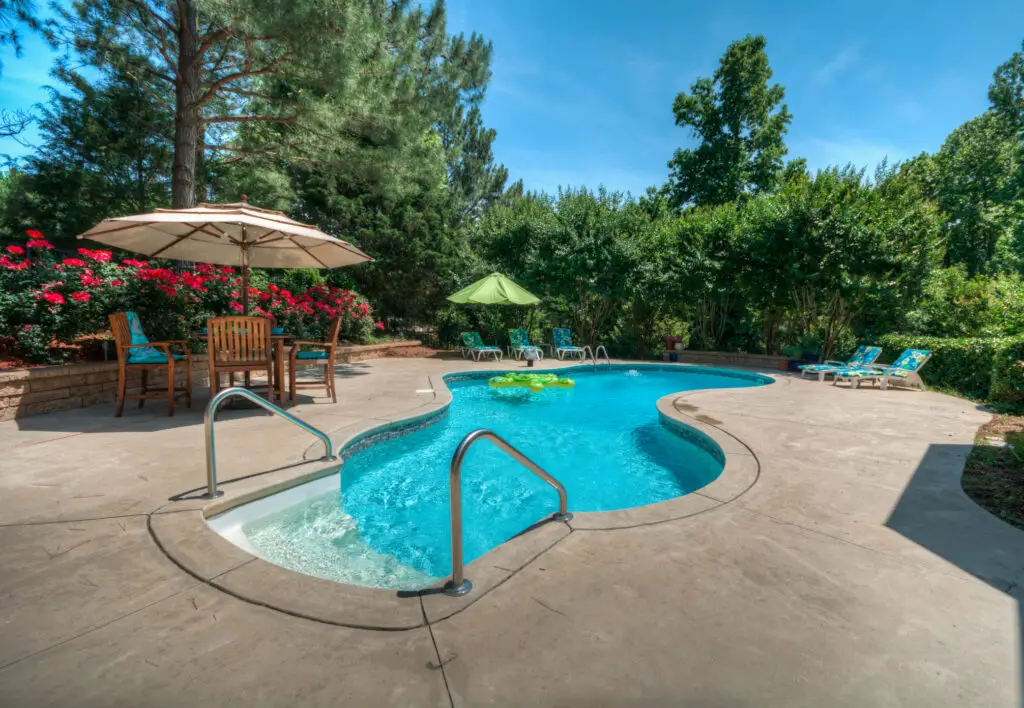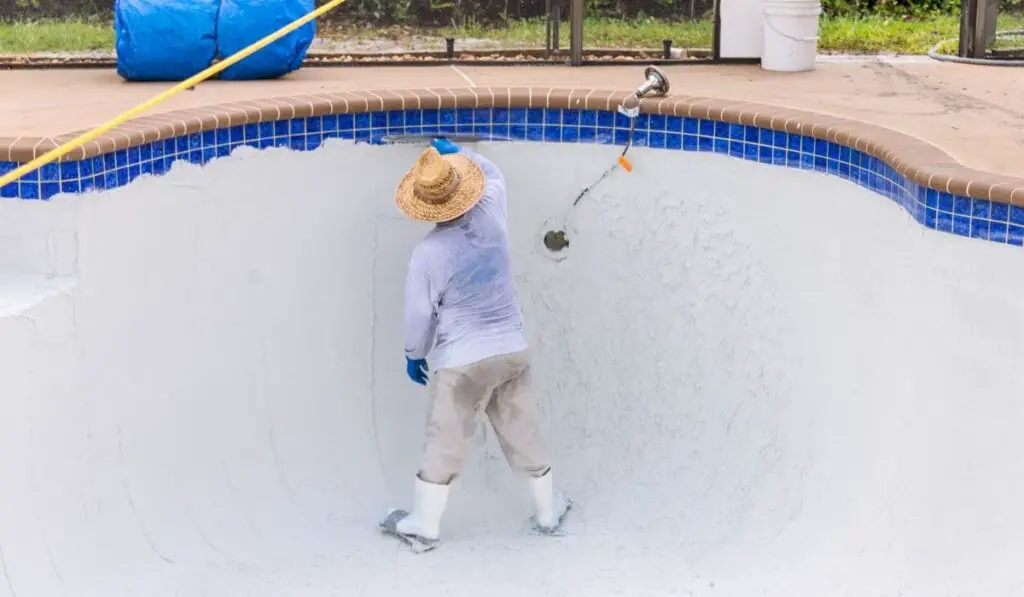Gunite is an alternative to lined and fiberglass swimming pools. The material is used to make the sides, steps, and floors of pools. And although gunite pools are not as common as some other types of pools, they are more customizable. Gunite and concrete have many similarities, so you may be wondering: Can gunite pools be smooth?
It’s possible to sustain cuts and scratches if you hit a gunite pool’s bottom while swimming due to the rough surface. However, to prevent these injuries, you can smoothen out the rough surfaces or use a smooth finish over the gunite. Adding a layer of paint, or even tile, can help as well.
With the help of a trowel, your pool construction crew can make the gunite smooth by adding a smooth finish and then waiting for about a week or two to allow it to set properly. Gunite pools can have tile, fiberglass, or exposed aggregate finishes. Let’s take a more in-depth look at gunite pools and how to improve their surface texture.
What Are Gunite Pools Made Of?

Gunite is a combination of cement, sand, and water. It’s similar to regular concrete, but there is a significant exception. While traditional concrete is poured by segment into wooden frames, gunite, on the other hand, is applied layer-by-layer with the use of a dedicated spray gun or a high-pressure hose.
In other words, gunite surfaces don’t have separation or seams similar to traditional poured concrete, which makes gunite pools more durable and seamless.
Why Are Gunite Pools Rough?
Gunite pools are different from fiberglass and vinyl pools when it comes to their feel. However, they don’t need to be as rough as you might imagine. Gunite pool builders usually ensure that they make the surface in a way that provides both enough friction and comfort.
However, in some cases, the surfaces may be so rough that they can cause injuries to swimmers. There are a few factors that could cause a gunite pool’s roughness. Some of them are acid washing, delamination, a lack of maintenance, and salt chlorination.
How to Make a Gunite Pool Smooth
Proper maintenance, including clearing away any dirt particles from your pool will help prevent a very rough gunite surface.
Also, don’t use salt chlorinators on your gunite pool. Pool operators must set a limit to the acid levels in their pools as acidity may cause surface corrosion.
Thankfully, the rough surfaces of gunite pools can be fixed very easily by resurfacing. The only thing you need to do is to contact a reliable pool service company to handle the job. You can also choose to paint your gunite pool, and if you use an epoxy-based paint you’ll add a few millimeters of thickness (6-10mm typically) that will cover over at least some of that roughness.
We recommend keeping a simple plaster repair kit on hand (on Amazon) if you have a gunite pool, and if the roughness is really bothering you, there’s no reason you couldn’t get a lot of this and drain the pool and apply your own resurface treatment, allowing you to control the smoothness that way. But we’re talking about a big project here!
Tips for Smoothing Out a Gunite Pool Surface

So, say you already have a gunite pool and you want to make it smoother. You have some options, but the first most aggressive one is to drain the pool and handle that roughness manually! This means literally sanding or grinding it down.
This task isn’t for the faint of heart, but if you’re comfortable with DIY projects it may be right for you!
Using a Floor Sander
You should use a floor sander if you have a large pool. Floor sanders usually have a similar appearance to vacuum cleaners, with the exception being that they have abrasive surfaces on the head base.
This is usually a simple push-behind tool with a long handle. You should use a belt sander if the job is a quicksand one. Belt sanders have rotating pads over which you can place a piece of sandpaper. This quickly helps to grind away your gunite.
Using a Small Grinder
You can use grinders if the job you have to do is a small one. Angle grinders usually have rotating blades that are fast and only partly exposed. A metal piece with a crescent moon shape is usually what covers the other half. When it comes to grinding down angles, this tool functions effectively.
It also grinds down the ends and edges of items. It gives you the ability to control the movement properly as it comes with handles. Overhead grinding can also be done with this tool.
There is also another type of small grinder known as the 7-inch hand grinder. This grinder has its blades sitting flat, and you just rub it along the surface that you wish to smooth out. This tool is mostly used for floor grinding, and it spins very fast. The hand grinder is not only heavier than the angle grinder, but it can also cause a strain in your arm after some time.
